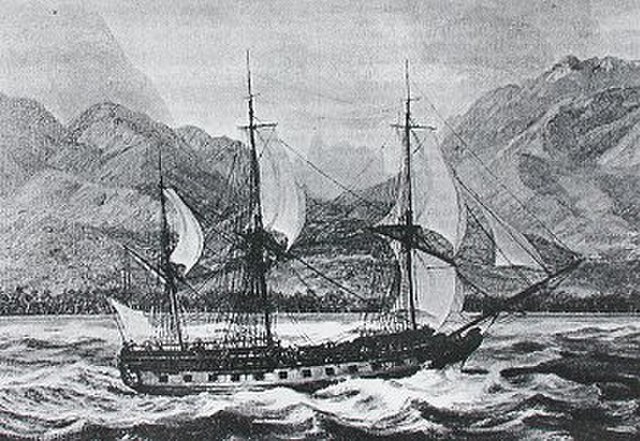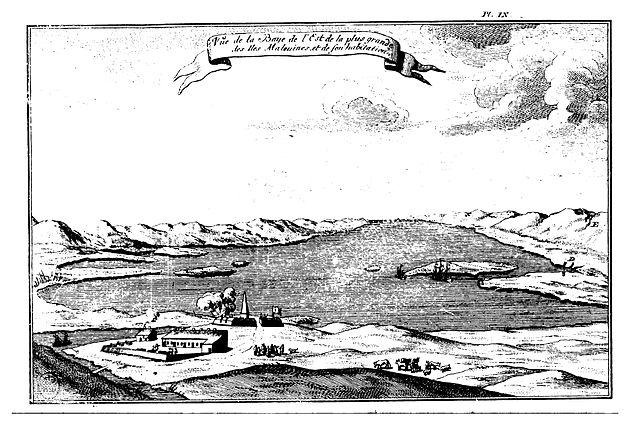Louis Antoine de Bougainville
Louis-Antoine, Comte de Bougainville was a French admiral and explorer. A contemporary of the British explorer James Cook, he took part in the Seven Years' War in North America and the American Revolutionary War against Britain. Bougainville later gained fame for his expeditions, including a circumnavigation of the globe in a scientific expedition in 1763, the first recorded settlement on the Falkland Islands, and voyages into the Pacific Ocean. Bougainville Island of Papua New Guinea as well as the Bougainvillea flower are named after him.
Portrait by Joseph Ducreux, 1790
Voyage autour du monde, Paris, 1772
Boudeuse, by Louis Antoine de Bougainville
Port St. Louis as established by Bougainville (Dom Pernety, 1769).
The Falkland Islands is an archipelago in the South Atlantic Ocean on the Patagonian Shelf. The principal islands are about 300 mi (480 km) east of South America's southern Patagonian coast and about 752 mi (1,210 km) from Cape Dubouzet at the northern tip of the Antarctic Peninsula, at a latitude of about 52°S. The archipelago, with an area of 4,700 sq mi (12,000 km2), comprises East Falkland, West Falkland, and 776 smaller islands. As a British overseas territory, the Falklands have internal self-governance, but the United Kingdom takes responsibility for their defence and foreign affairs. The capital and largest settlement is Stanley on East Falkland.
Naval confrontation during the 1914 Battle of the Falkland Islands (painting by William Lionel Wyllie)
Government House in Stanley is the Governor's official residence.
Colony of southern rockhopper penguins on Saunders Island
Stanley, now officially a city, is the financial centre of the Falkland Islands' economy.








